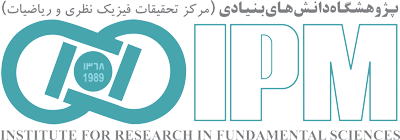“School of Cognitive”
Back to Papers HomeBack to Papers of School of Cognitive
| Paper IPM / Cognitive / 18050 |
|
||||||||||||||
| Abstract: | |||||||||||||||
|
Dopamine, a key neuromodulator in the central nervous system, regulates cortical excitability and plasticity by interacting with glutamate and GABA receptors, which are affected by dopamine receptor subtypes (D1- and D2-like). Non-invasive brain stimulation techniques can induce plasticity and monitor cortical facilitation and inhibition in humans. In a randomized, placebo-controlled, double-blinded study, we investigated how dopamine and D1- and D2-like receptors impact transcranial direct current stimulation (tDCS)-induced plasticity concerning glutamatergic and GABAergic mechanisms. Eighteen healthy volunteers received 1 mA anodal (13 min) and cathodal tDCS (9 min) over the left motor cortex combined with the dopaminergic agents l-dopa (general dopamine activation), bromocriptine (D2-like receptor agonist), combined D2 antagonism via sulpiride and general dopaminergic activation via l-dopa to activate D1-like receptors, and placebo medication. Glutamate-related cortical facilitation and GABA-related cortical inhibition were monitored using transcranial magnetic stimulation techniques, including I-O curve, intracortical facilitation (ICF), short-interval intracortical inhibition (SICI), and I-wave facilitation protocols. Our results indicate that anodal tDCS alone enhanced the I-O curve and ICF while decreasing SICI. Conversely, cathodal tDCS decreased the I-O curve and ICF while increasing SICI. General dopamine and D2 receptor activation combined with anodal tDCS decreased the I-O curve and ICF, but enhanced SICI compared to tDCS alone. When paired with cathodal tDCS, general Dopamine and D2-like receptor activity enhancement prolonged the cathodal tDCS effect on excitability. After anodal tDCS, D1-like receptor activation increased the I-O curve and ICF while reducing SICI. These effects were abolished with cathodal tDCS. Dopaminergic substances combined with anodal and cathodal tDCS did not have a significant effect on I-wave facilitation. These results suggest that D1-like receptor activation enhanced LTP-like plasticity and abolished LTD-like plasticity via glutamatergic NMDA receptor enhancement, while global dopaminergic and D2-like receptor enhancement weakened LTP-like but strengthened LTD-like plasticity primarily via glutamatergic NMDA receptor activity diminution.
Download TeX format |
|||||||||||||||
| back to top | |||||||||||||||



















